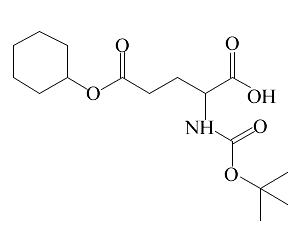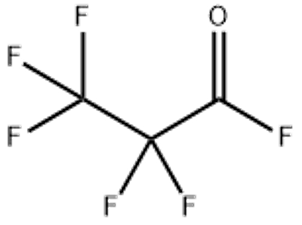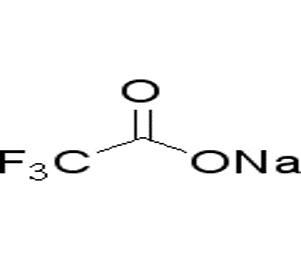Boc-L-glutamic acid 5-cyclohexyl ester(CAS# 73821-97-3)
| WGK Germany | 3 |
| HS Code | 2924 29 70 |
Introduction
boc-L-glutamic acid 5-cyclohexyl ester(boc-L-glutamic acid 5-cyclohexyl ester) is an organic compound. Its chemical structure consists of tert-butoxycarbonyl (boc) protected L-glutamic acid esterified with cyclohexanol.
The compound has some of the following properties:
-Appearance: Colorless solid
-Melting point: about 40-45 degrees Celsius
-Solubility: Soluble in some organic solvents such as dichloromethane, dimethyl sulfoxide and N,N-dimethylformamide, insoluble in water.
This compound is mainly used in drug synthesis and biochemical research, and has the following uses:
-Chemical synthesis: As an amino acid protecting group, it can protect glutamic acid for polypeptide synthesis and solid phase synthesis in organic synthesis.
-Drug research: In drug research, it can be used to study the structure-activity relationship, metabolic pathway and drug stability of drugs.
-Biochemical research: used to study the role of glutamate in proteins and metabolic pathways.
The preparation of boc-L-glutamic acid 5-cyclohexanol ester is usually carried out by the following steps:
1. L-glutamic acid is reacted with a tert-butyl carbonic acid protecting agent (such as tert-butoxycarbonyl sodium chloride) to obtain boc-L-glutamic acid.
2. Reaction of boc-L-glutamic acid with cyclohexanol by heating under alkaline conditions to obtain boc-L-glutamic acid 5-cyclohexanol ester.
Regarding the safety information of this compound, the following points need to be noted:
-This compound may cause irritation and damage to the skin, eyes and respiratory tract. Avoid direct contact during handling.
-During operation and storage, avoid contact with oxygen and organic matter, because it may have the risk of oxidation and combustion.
-During use, ensure good ventilation conditions.







